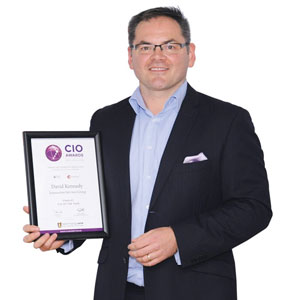THANK YOU FOR SUBSCRIBING

Why Software Delivery Centres Fail In Insurance
David Bejar, Vp Head of IT Software Engineering, Allianz Indonesia


David Bejar, Vp Head of IT Software Engineering, Allianz Indonesia
David Bejar is VP Head of IT Software Engineering at Allianz Indonesia, where he leads software engineering delivery, DevSecOps, agile, and UX practices. With over 20 years of experience in IT and more than a decade driving digital transformation in the insurance industry, he focuses on improving delivery throughput and quality, fostering a high-performance engineering culture across multinational environments.
Creating software within an insurance company is inherently complex. Beyond the intricacies of insurance itself, IT departments continuously balance being perceived both as cost centres and indispensable enablers of business success. As a cost centre, IT faces immense pressure to reduce expenses, especially challenging amidst rising IT inflation. Simultaneously, as critical business enablers, IT teams must deliver extensive and rapidly evolving functionalities, meeting ever-accelerating timelines without compromising quality or application performance.
Successful software development in insurance depends on finding the right balance between economies of scale and economies of speed, between centralization and localization
Yet, while cost-cutting is crucial, no laurels come from merely trimming expenses. Savings lose their appeal if software fails to meet business demands or if the solutions delivered frustrate customers, agents, or regulators. Thus, cost efficiencies only matter when they align with swiftly delivering valuable, high-quality solutions.
Operating within a multinational insurance group compounds these challenges. Local IT spending is often seen as redundant from a global or regional perspective— unnecessary duplication of systems, resources, or investments. However, insurance markets are highly fragmented, each with distinct regulatory and commercial requirements. Localization is not a luxury but a necessity and viewing all local adaptations as wasteful undermines the organization’s ability to remain competitive and compliant.
Faced with this dilemma, insurers often become prime targets for panacea peddlers promising cost savings through industrialization, software supply chain optimization, and economies of scale. In theory, economies of scale in software development reduce average costs per feature or user by leveraging reusable components, standardized processes, shared resources, and diminishing marginal costs.
In practice, however, these gains often backfire. When organizations double down on economies of scale, they create highly interdependent systems that suffer from bottlenecks, delays, bugs, localization challenges, and technical debt. To overcome these issues, the only path available is to add more resources—vertical scaling— which brings exponentially higher costs and complexity.
The IT industry recognizes two primary scaling models: vertical and horizontal. Vertical scaling—adding more people or resources to solve a problem—quickly hits diminishing returns due to coordination overhead and systemic fragility. Worse still, it becomes the default mode of scaling when centralization and economies of scale dominate the agenda. On the other hand, horizontal scaling distributes work across decoupled teams or modules, allowing growth to track more predictably with cost and complexity.
Horizontal scaling isn’t free of tradeoffs. Decoupling increases architectural and organizational complexity and may result in some functional duplication. But it also unlocks agility and innovation. Independent teams can tailor solutions to local requirements, iterate faster, and respond to change with greater resilience.
This is where economies of speed come into play. Defined as the advantage of delivering software quickly and iteratively, economies of speed reduce time-to-market, improve feedback loops, and increase responsiveness to user needs. Agile methodologies, DevSecOps practices, and strong UX capabilities enable these outcomes, translating into real business value.
Ironically, attempts to centralize software development to gain economies of scale often end up eroding both those very savings and the speed necessary for market competitiveness. Centralized delivery centres frequently suffer from prioritization conflicts, process rigidity, bottlenecks, and a disconnect from local market realities. The more centralized and interdependent the system becomes, the more likely it is that scaling must occur vertically raising costs, reducing agility, and still failing to meet local business needs.
Centralization, if pursued, must come with strong governance. Not everything should be centralized. Clear boundaries must be drawn between what can be standardized and what should remain locally controlled. Counterintuitively, true cost savings may come from allowing a certain level of local autonomy. Without forward-thinking governance and strategic planning, centralization increases both direct costs and opportunity costs.
In the end, successful software development in insurance depends on finding the right balance between economies of scale and economies of speed, between centralization and localization. The goal should not be to eliminate duplication at all costs but to make deliberate choices about where duplication is acceptable in exchange for speed, responsiveness, and customer relevance.
Only by embracing flexible, horizontally scalable approaches and enforcing clear governance can software delivery centres fulfil their promise: reducing costs without sacrificing the agility and quality that today’s insurance market demands. Without this balance, centralization efforts will continue to fail delivering neither the cost savings promised nor the value required.











